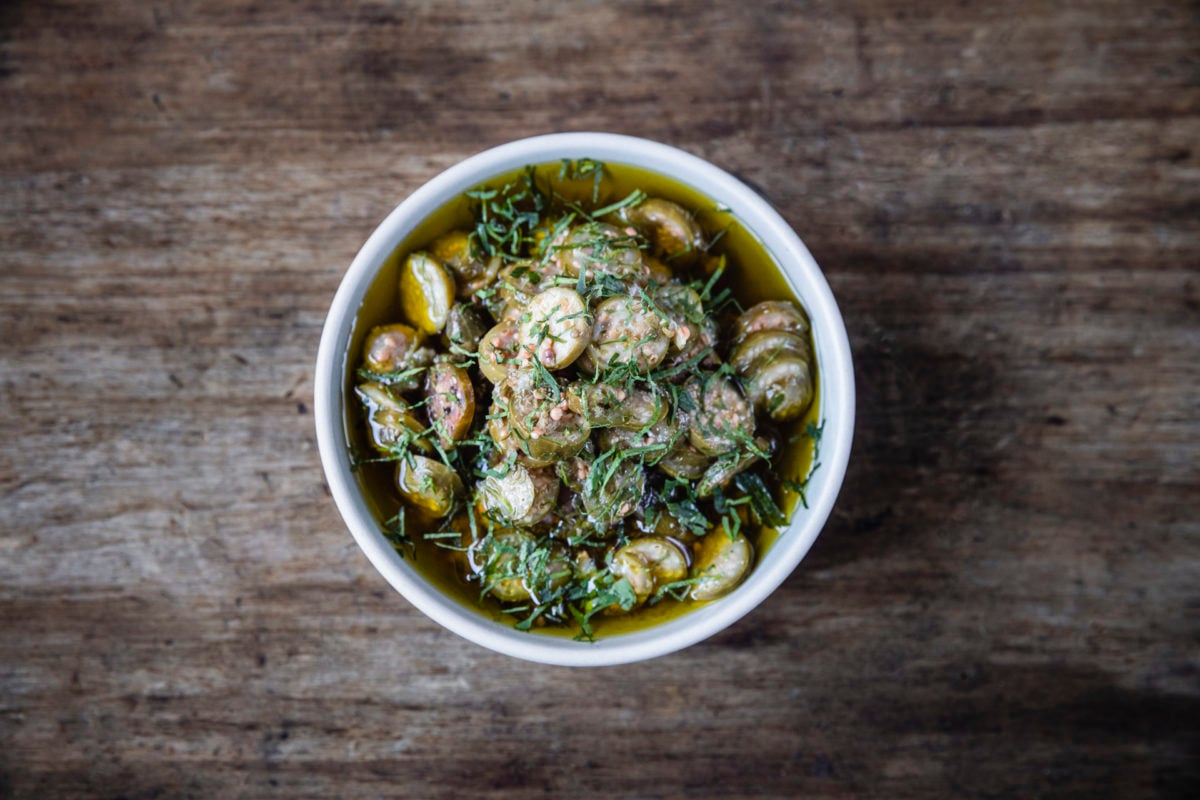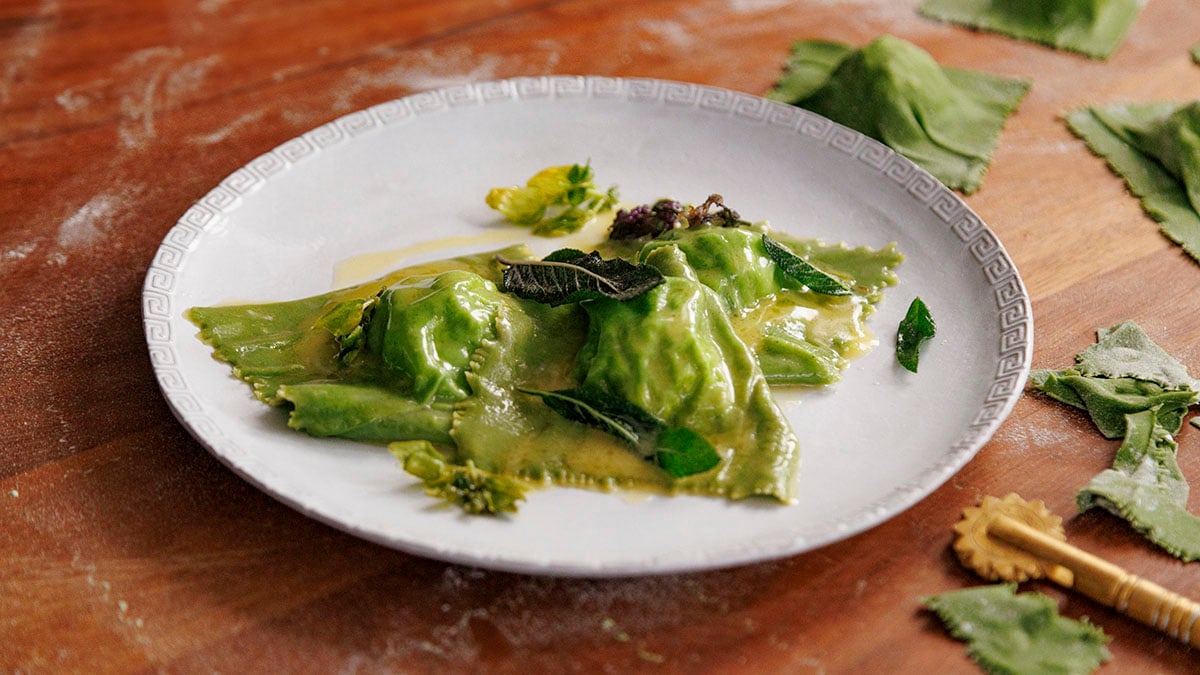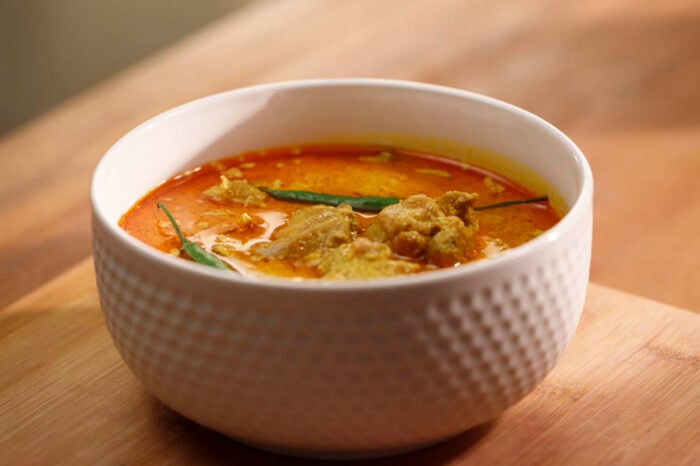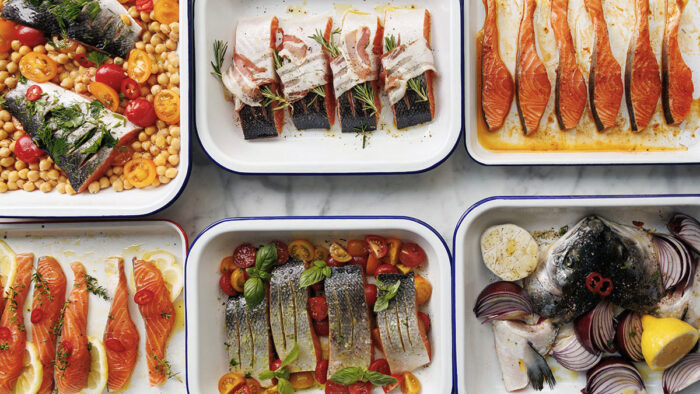
Is YesChef right for me?
Take this quiz to find out.
What are Caperberries? How to Make Delicious Caperberry Relish
Written by the YesChef staff
Share on


When shopping in the pickled and jarred goods aisle at your local grocery store, you probably noticed little green capers. But what about the larger caperberry with a curious shape? The intriguing briny green pod not only looks interesting, it tastes great too. That’s why chef Nancy Silverton loves using them in her cooking – but what are caperberries exactly and how do you use caperberries in the kitchen?
Get Access to an Ever-Growing Library of Classes
Every Subscription includes:
- Unlimited Streaming of all Classes
- Watch on your phone, tablet or laptop
- Story-driven Classes, Practical Lessons
- Recipes with Step-by-Step Guidance
- 30-day Satisfaction Guarantee
- New Lessons added all the time
$9.99/mo
Billed annually

What is a caperberry?
Caperberries are the fruit of the caper bush that grow in Mediterranean climates like Spain, Italy, Morocco, Turkey, and Greece. The caperberry is usually pickled in a brine solution to give it that piquant flavor most people associate with capers. A little more tart than most other pickles or brined ingredients, caperberries can be used in numerous recipes, including salads, pastas, sandwiches, and condiments.
Caperberries vs capers
What’s the difference between caperberries and capers, might you ask? While caperberries and capers come from the same bush, they’re not actually the same thing. Caperberries are the unopened mature flower buds of the caper bush. The fruit resembles a miniature fig, and is similar in size to an olive or a grape. Capers, on the other hand, are much smaller in size because they are harvested when they are unopened little flower buds, much earlier than when caperberries are harvested. Both, however, are liquid-brined and preserved for later use in a sauce, pastas, dressings, and more.
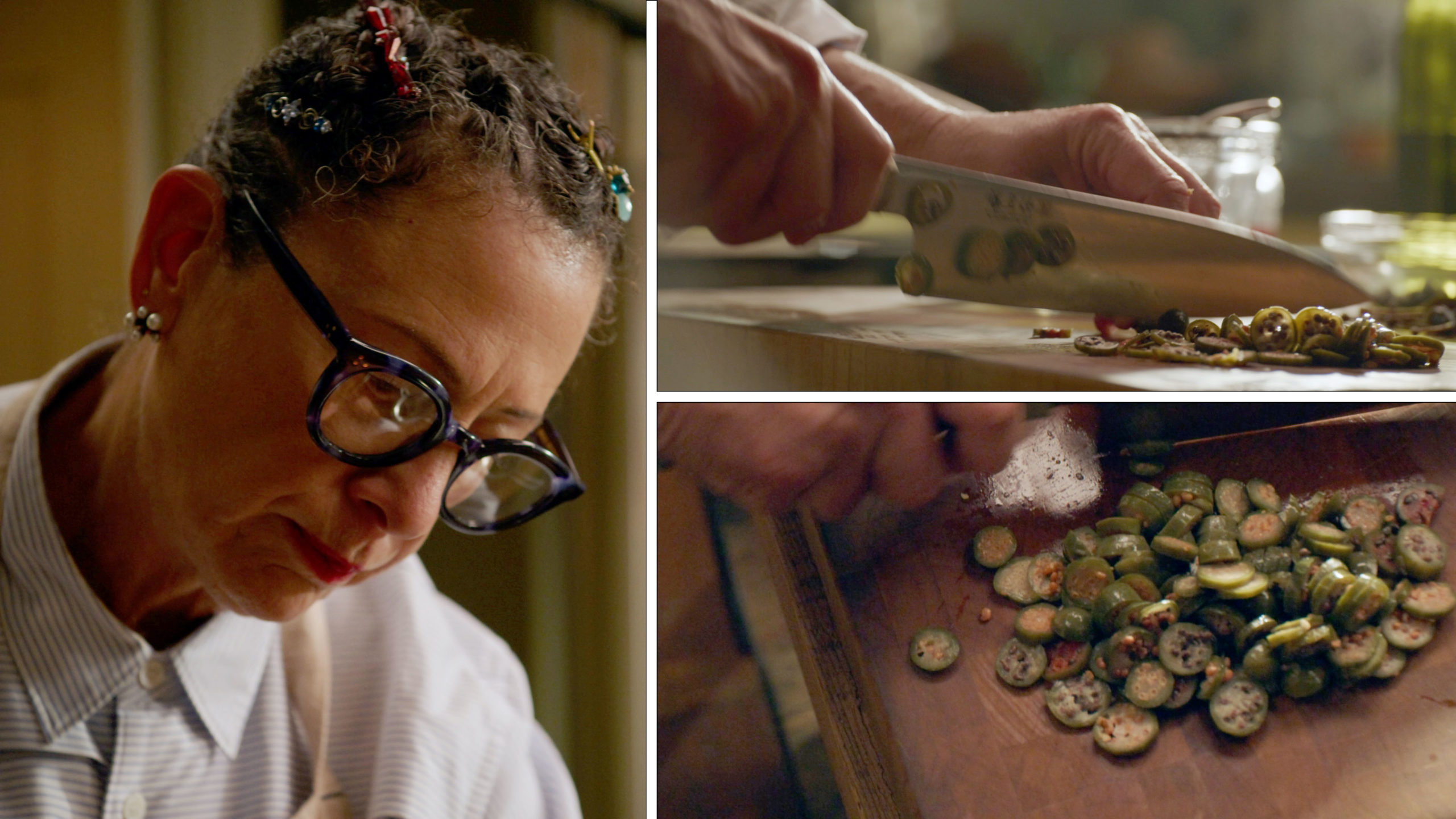
What do caperberries taste like and how do you prepare them for cooking?
Caperberries taste salty and sour with a slight crunchy texture due to the edible seeds inside. They are regularly used as a garnish or can be prepared in salads, sandwiches, sauces, and condiments, like chef Nancy Silverton’s caperberry relish (see recipe below). Regular capers tend to be saltier, packing a more powerful flavor.
If you buy salt-preserved capers, it’s best to first soak them in cold water to get rid of the excess salt. For brined capers and caperberries, just place them in a colander and run under cold water before using. As chef Nancy Silverton explains in her class, capers don’t necessarily need to be chopped because they are already small, but the bigger caperberry can be thinly sliced, chopped, or cut into halves.
How to shop for caperberries and capers?
Look for capers in the pickles section, next to cornichons and cocktail onions. You’ll find either salt-packed or vinegar-pickled capers, and if you go to a good deli or a specialty store, you’ll also find caperberries in a jar. Alternatively, capers and caperberries are sold at specialty grocers online.
Chef Nancy Silverton prefers the salt-preserved version of capers, and the vinegar-pickled caperberries, which tend to come from Spain. Jars of capers and caperberries can be stored in the pantry, and relocated to the fridge once opened, where they can usually be kept for one year.
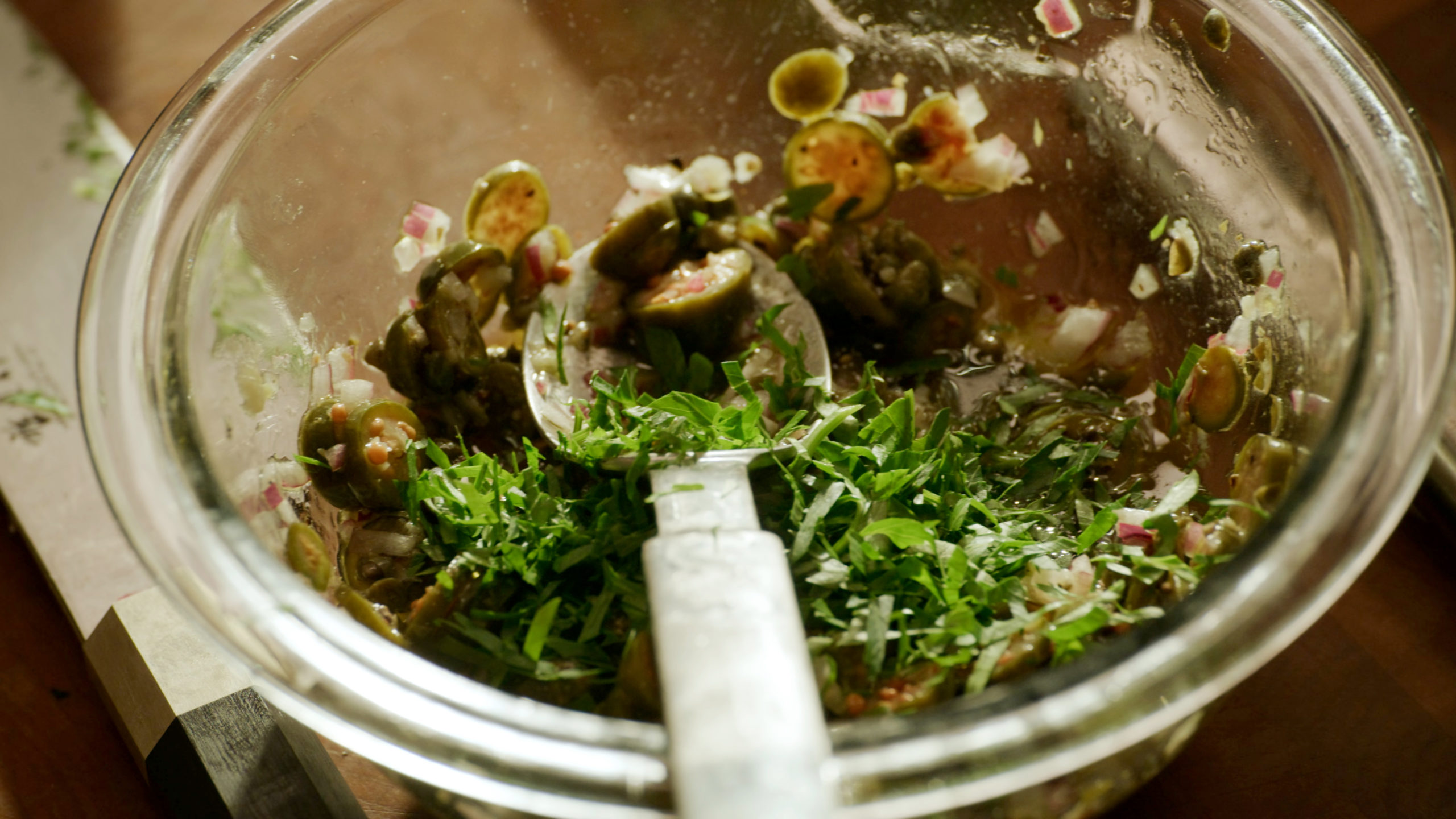
How to cook with capers and caperberries?
Both capers and caperberries are great in relish and sauce. It’s an essential ingredient in chef Nancy Silverton’s cooking, as seen in her Quattro Condimenti class, where she prepares a delectable spread that emulates the legendary mozzarella bar at Osteria Mozza. Here, she serves this dish alongside condiments like a salsa romesco, basil pesto, black olive tapenade, and fett’unta, grilled bread smothered in olive oil.
Capers and caperberries also pair wonderfully with a smoked salmon and cream cheese bagel, punch-up a buttery lemon sauce for grilled fish, and can even upgrade the classic martini. We also love the addition of tart and crunchy caperberry slices inside potato salads, creamy pastas, roasted chicken, and on pizzas.
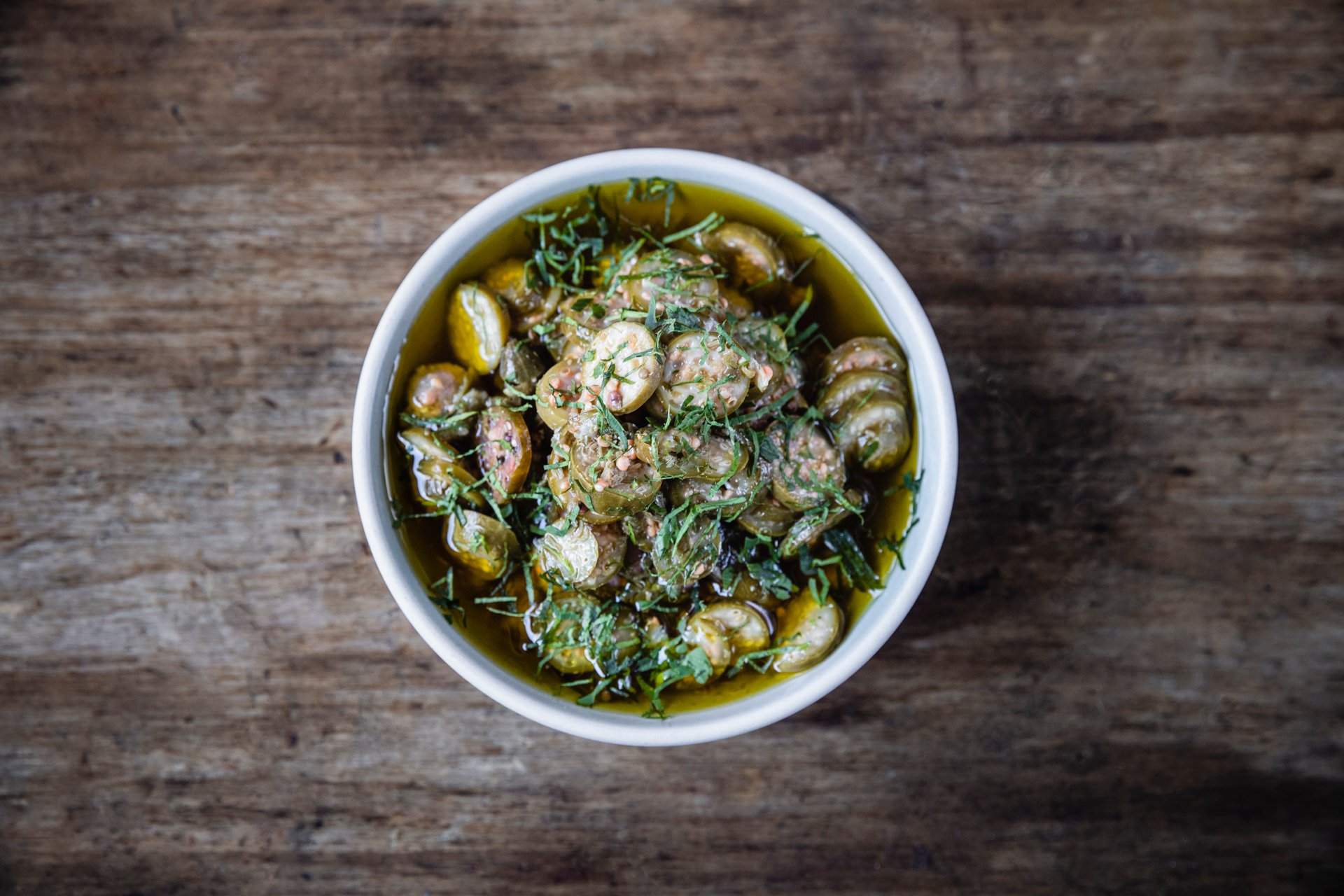
Quattro Condimenti with Mozzarella & Fett’unta
Serves:
5
|
Hands-on:
10 min
|
Total:
25 min
Ingredients
- 1/2 cup caperberries
drained and sliced
- 2 tablespoons capers
(preferably salt-packed), soaked in water for 15 minutes if salt-packed, rinsed, drained, and chopped
- 1/4 small red onion
minced
- 1/4 cup extra-virgin olive oil
- 1 tablespoon champagne vinegar
- Black pepper
freshly ground
- 2 small garlic cloves
grated on a Microplane or minced (about 1 teaspoon)
- 1/4 cup fresh Italian parsley leaves
finely sliced
GEAR
- Mixing bowl
- Strainer
- Knife
- Microplane
Recipe
- In a mixing bowl, add caperberries, capers, red onion, extra-virgin olive oil, champagne vinegar, and season with black pepper.
- Add garlic, stir to combine and stir in sliced Italian parsley right before serving.


Nancy Silverton
James Beard Award-winning chef, best-selling cookbook author, and the restaurateur behind Michelin-starred Mozza, Nancy Silverton takes viewers on a journey from her home in Panicale, Italy, to her home in Los Angeles. Viewers learn a range of Nancy’s renowned dishes, including her signature Caesar Salad, Chi Spacca Pepper Steak, 10+ vegetarian dishes, Mom’s Apple Pie, and more.
More Articles
5 Easy Recipes for Busy Weeknights
May 10, 2023
Bucatini Carbonara
September 18, 2023
Pasta Bianco
September 19, 2023
What is Hummus? The Best Hummus Recipe
November 23, 2022
Green Ravioli
September 19, 2023
Tagliatelle
September 19, 2022
